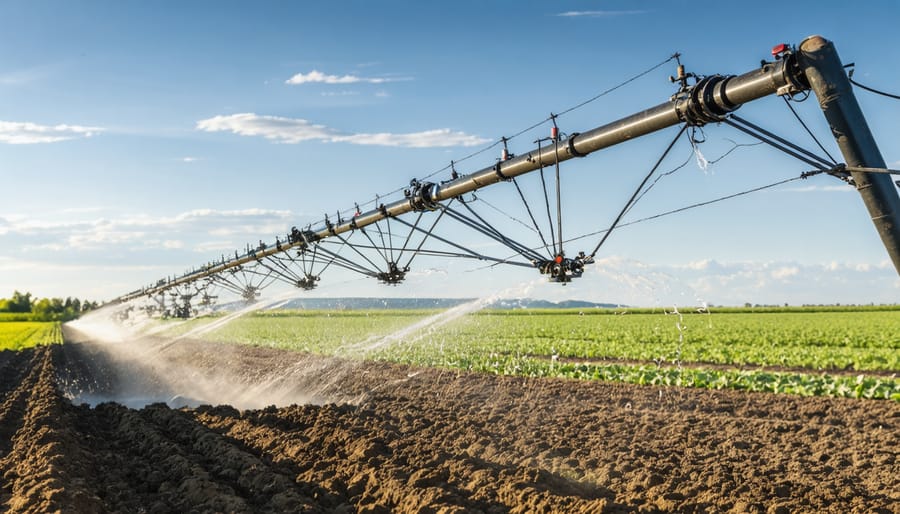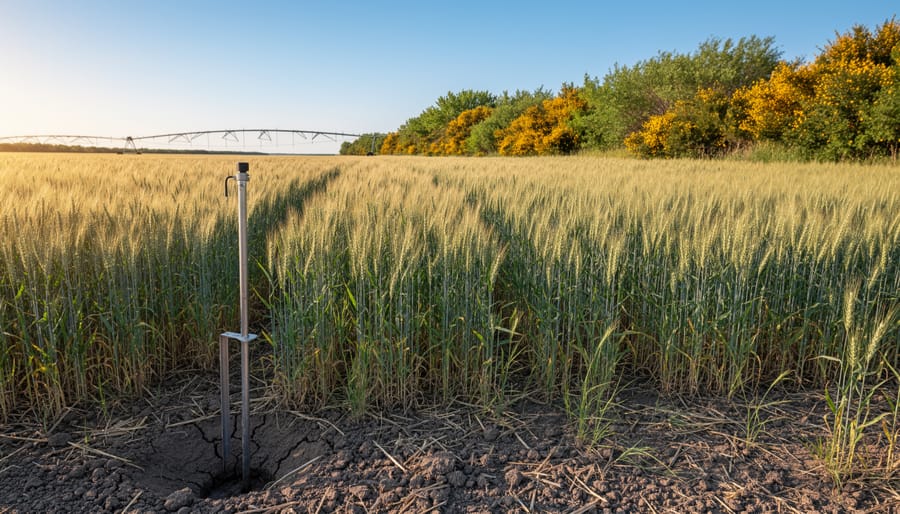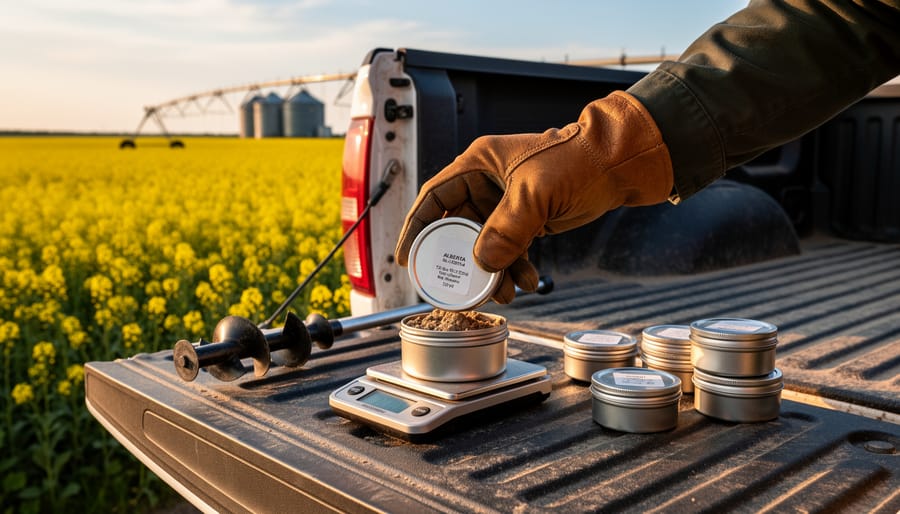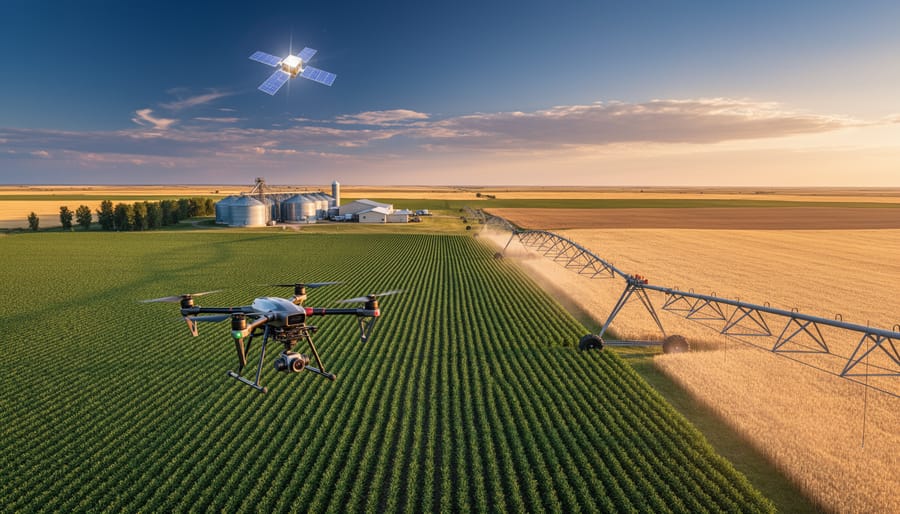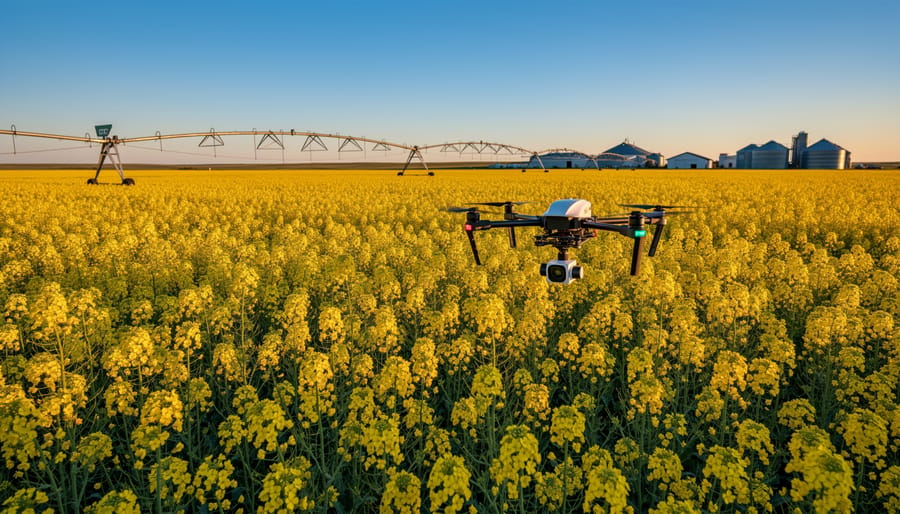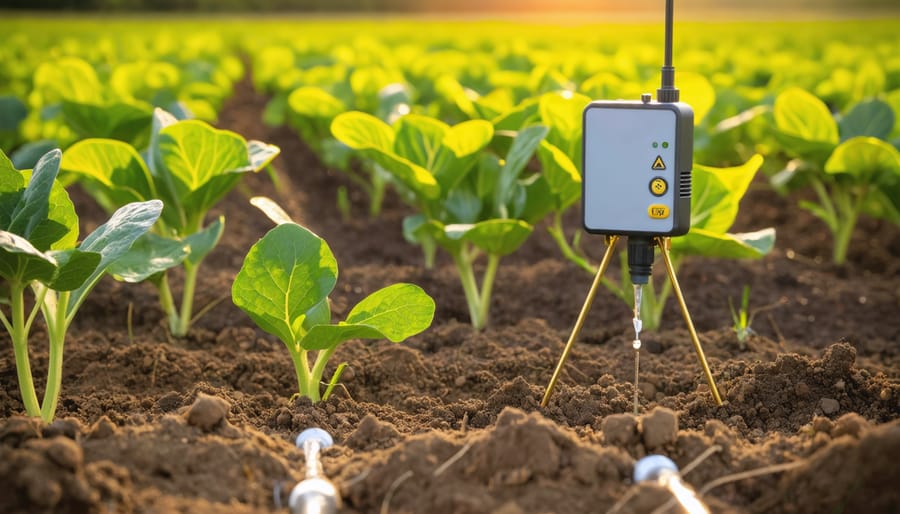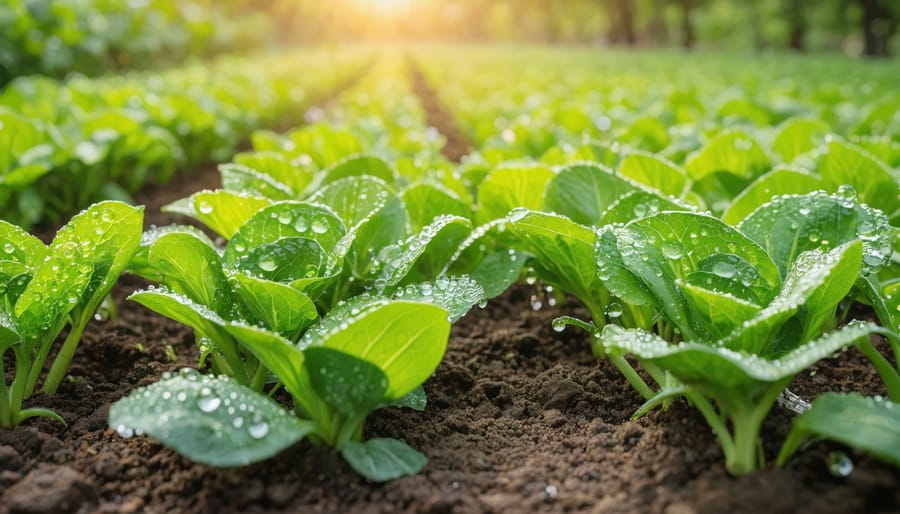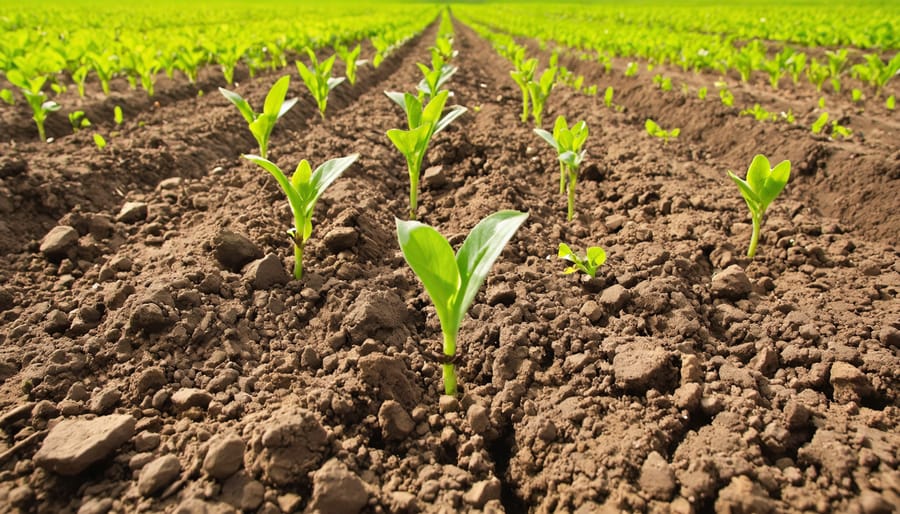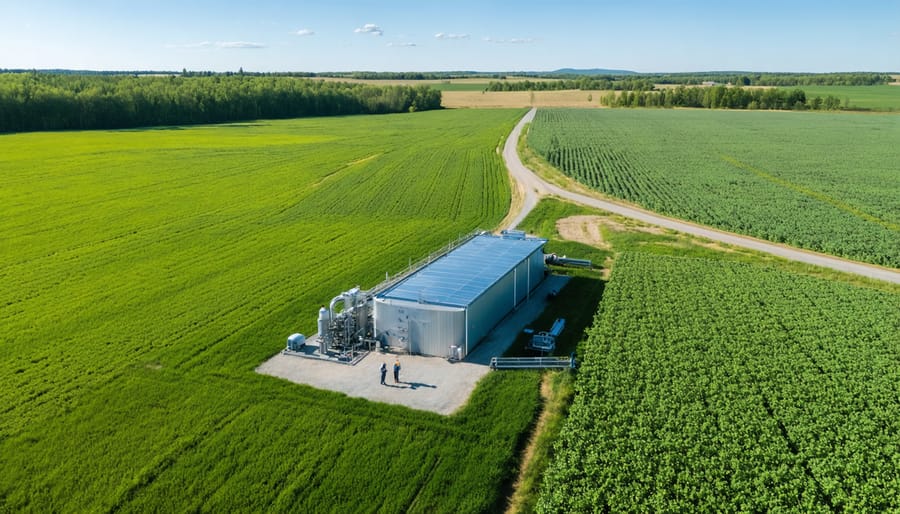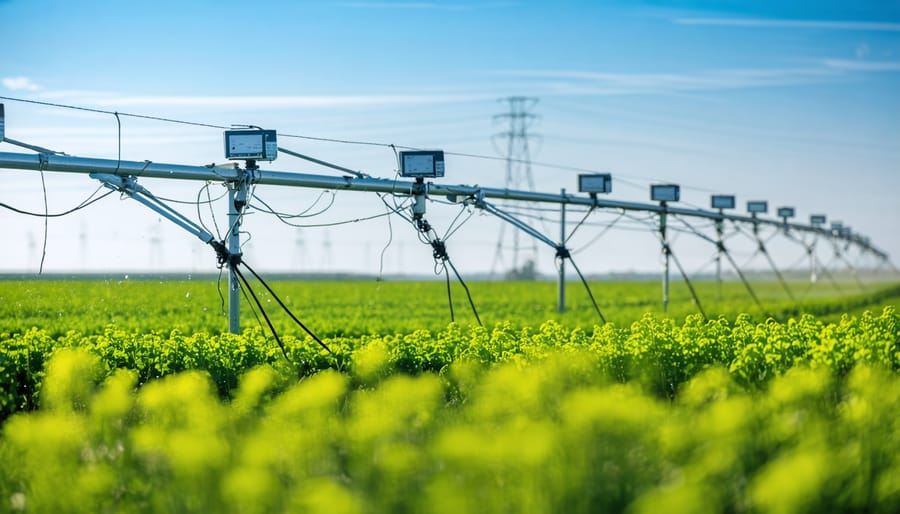Water scarcity threatens agricultural sustainability across Alberta’s prairies, demanding immediate action from our farming community. Innovative water management strategies have already helped local farmers reduce consumption by up to 40% while maintaining crop yields. From precision irrigation systems in Lethbridge County to groundbreaking rainwater harvesting projects near Red Deer, Alberta’s agricultural leaders are pioneering water conservation methods that combine traditional knowledge with cutting-edge technology.
Our changing climate makes water sustainability not just an environmental imperative but a critical business decision. Research from the University of Alberta demonstrates that farms implementing comprehensive water management strategies see an average 25% reduction in operating costs within the first three years. These solutions range from simple soil moisture monitoring to advanced drip irrigation systems, offering options for operations of every size and budget.
This practical guide, developed in collaboration with Alberta’s leading agricultural water experts and successful local farmers, presents proven strategies that work specifically in our prairie conditions. Whether you’re managing a large-scale operation or a family farm, these water conservation methods can help secure your farm’s future while contributing to our province’s broader sustainability goals.
The Water-Carbon Connection in Alberta Agriculture
Energy Costs of Water Management
Water management systems can contribute significantly to a farm’s hidden water-related carbon costs, primarily through electricity consumption for pumping and irrigation equipment. Here in Alberta, typical pivot irrigation systems consume between 40-60 kilowatt-hours per hectare during the growing season.
Local farmers are finding innovative ways to reduce these energy costs. Installing variable frequency drives (VFDs) on irrigation pumps can decrease energy usage by 30-40%. These smart systems adjust pump speeds based on actual water needs, rather than running at full capacity continuously.
Regular maintenance of irrigation systems is equally important. Something as simple as fixing leaks and maintaining proper pressure can reduce energy waste by up to 20%. Many Alberta farmers are also transitioning to gravity-fed systems where terrain permits, eliminating pumping costs entirely.
Solar-powered pumping systems are gaining popularity across the prairies, with initial setup costs typically recovered within 5-7 years through energy savings. These systems work particularly well for smaller operations and are eligible for various provincial renewable energy grants.
Water Loss and Carbon Impact
The connection between water loss and carbon emissions on Canadian farms is more significant than many realize. When water is wasted through inefficient irrigation or poor soil management, it often requires additional pumping and treatment, which increases energy consumption and, consequently, carbon emissions.
A recent study in Southern Alberta showed that farms using outdated irrigation systems consumed up to 30% more energy compared to those with modern water management practices. This extra energy usage translates to approximately 2.5 tonnes of additional CO2 emissions per hectare annually.
Beyond direct energy use, water loss leads to soil degradation, requiring more frequent tilling and increased fertilizer application, further contributing to your farm’s carbon footprint. The good news is that by implementing water-smart practices, you’re not just conserving water – you’re also reducing your operation’s environmental impact.
Many Alberta farmers have found success with soil moisture monitoring systems and scheduled irrigation, reporting up to 40% reduction in water usage and associated energy costs. These improvements not only benefit the environment but also contribute to more sustainable and profitable farming operations.
Tech-Smart Water Solutions for Modern Farms
Precision Irrigation Systems
Modern farming in Alberta has seen remarkable water efficiency improvements through precision irrigation technologies, offering farmers powerful tools to optimize water usage while reducing their carbon footprint. These systems combine soil moisture sensors, weather monitoring stations, and GPS-guided equipment to deliver water exactly where and when crops need it.
Local success stories show that farms implementing these technologies typically reduce water consumption by 25-30% compared to traditional irrigation methods. For instance, the Peterson Family Farm in Lethbridge achieved a 28% reduction in water usage while maintaining crop yields by installing soil moisture probes and automated sprinkler controls.
The key components of modern precision irrigation include:
• Variable Rate Irrigation (VRI) systems that adjust water application based on field conditions
• Soil moisture sensors providing real-time data through wireless networks
• Smart controllers that integrate weather forecasts with irrigation scheduling
• Mobile apps allowing farmers to monitor and adjust irrigation from anywhere
Beyond water conservation, these systems contribute to carbon reduction by decreasing pump operation time and energy consumption. Farmers report energy savings of 20-25% after implementation, translating to lower operational costs and reduced emissions.
The initial investment in precision irrigation equipment typically pays for itself within 2-3 growing seasons through reduced water and energy costs. Government incentive programs and agricultural grants are available to help offset installation costs, making these systems increasingly accessible to Alberta farmers.
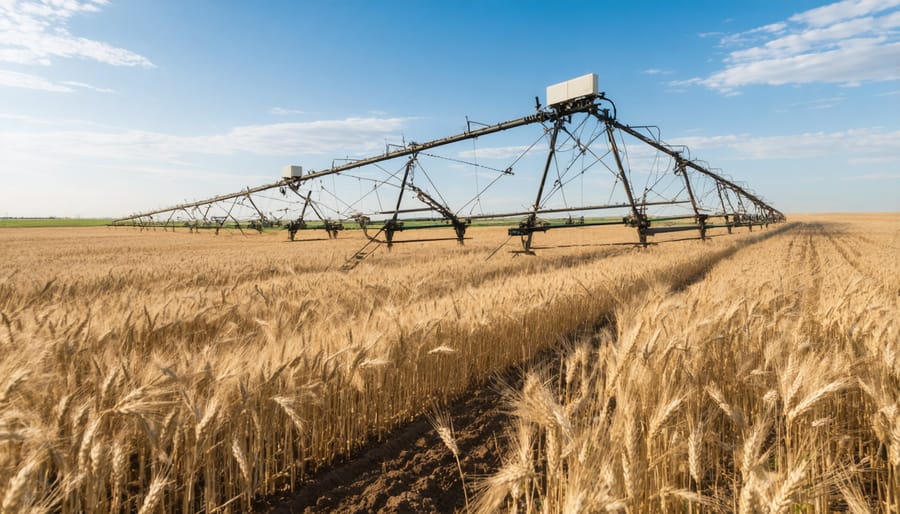
Smart Monitoring and Automation
Modern farming technology has revolutionized how we monitor and manage water resources across Alberta’s agricultural landscape. Smart irrigation controllers, soil moisture sensors, and weather monitoring systems work together to create an efficient, data-driven approach to water management.
Many Alberta farmers are now using soil moisture probes that provide real-time data through smartphone apps, allowing them to track water needs precisely. These sensors, typically installed at different soil depths, help determine exactly when and how much to irrigate, preventing both under and over-watering.
Weather stations equipped with rain gauges, wind sensors, and temperature monitors provide valuable data that integrates with irrigation systems. For example, the Brown family farm near Lethbridge saved approximately 30% on water usage after installing a smart irrigation system that automatically adjusts watering schedules based on weather forecasts and soil conditions.
Leak detection systems have become increasingly sophisticated, using pressure sensors and flow meters to identify potential problems before they lead to significant water loss. These systems can automatically shut off water flow when leaks are detected, preventing waste and potential crop damage.
Remote monitoring capabilities allow farmers to manage multiple irrigation zones from anywhere, using their mobile devices. This technology is particularly valuable during peak growing seasons when timing is crucial. Several agricultural service boards in Alberta offer training programs to help farmers implement these systems effectively.
The initial investment in smart monitoring equipment typically pays for itself within 2-3 growing seasons through reduced water consumption, lower energy costs, and improved crop yields. Government grants and incentives are often available to help offset implementation costs, making these technologies increasingly accessible to farms of all sizes.
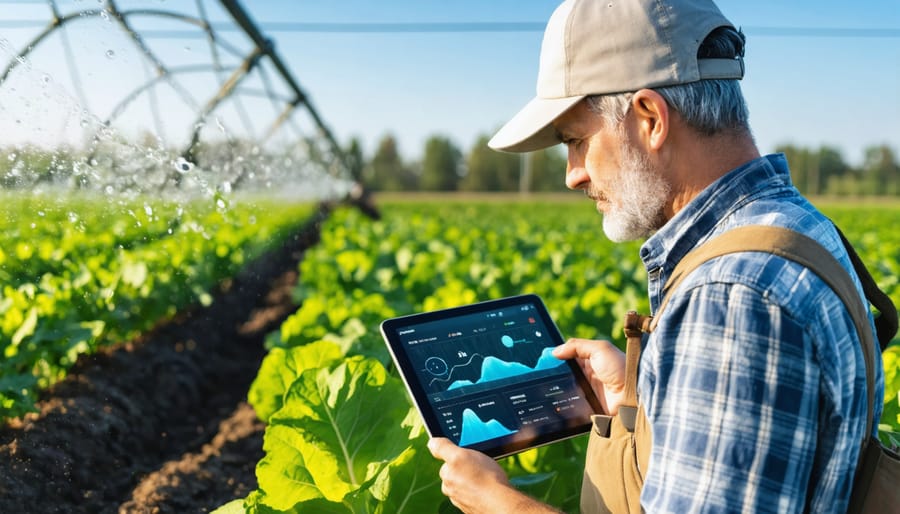
Natural Water Conservation Methods
Soil Health Strategies
Healthy soil acts as a natural water reservoir, making it crucial for sustainable water management. Alberta farmers have discovered innovative ways to improve soil moisture retention through strategic soil management practices.
Adding organic matter through cover crops and crop residue helps create a soil structure that holds water more effectively. Local success stories show that increasing organic matter by just 1% can help soil retain an additional 25,000 litres of water per hectare. This improvement not only reduces irrigation needs but also builds resilience against drought conditions.
Minimum tillage practices protect soil structure and prevent moisture loss through evaporation. Many Alberta farmers have adopted no-till methods, reporting up to 30% better water retention compared to conventional tillage. Additionally, maintaining living root systems year-round through crop rotation and intercropping creates natural pathways for water infiltration.
Consider implementing these practical steps:
– Use diverse crop rotations to build soil structure
– Apply mulch to reduce evaporation
– Monitor organic matter levels through regular soil testing
– Maintain crop residue on fields after harvest
– Include deep-rooted crops in rotation plans
These strategies work together to create a healthy soil ecosystem that naturally conserves water while supporting robust crop growth. Remember, good soil health management is a long-term investment in your farm’s water security.
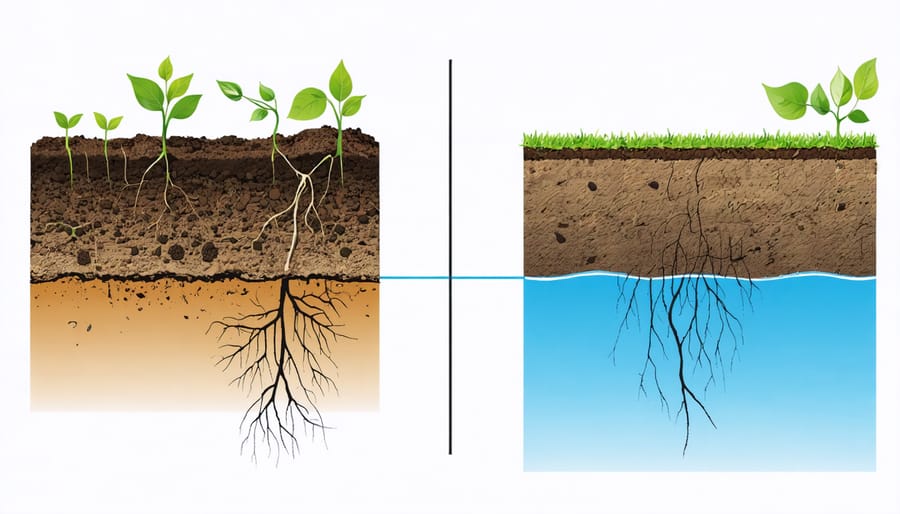
Cover Cropping Benefits
Cover crops serve as a powerful tool in water conservation, offering Alberta farmers multiple benefits while protecting their most precious resource. By maintaining living plant coverage during off-seasons, these crops create a protective blanket over the soil, significantly reducing water loss through evaporation and improving moisture retention.
Research from the University of Alberta shows that cover crops can increase soil water holding capacity by up to 20% through enhanced organic matter content and improved soil structure. Local farmers who have implemented cover crops report requiring less irrigation during the main growing season, with some noting water savings of 15-25%.
Popular cover crop options for Alberta’s climate include fall rye, winter wheat, and legumes like field peas and hairy vetch. These plants develop extensive root systems that create channels for water infiltration, preventing runoff and allowing precious moisture to penetrate deeper into the soil profile.
Beyond water conservation, cover crops provide additional advantages such as wind erosion protection, weed suppression, and nutrient cycling. Many Alberta farmers have found success with cocktail mixes of different cover crop species, maximizing benefits while spreading risk.
For best results, select cover crops that align with your rotation schedule and soil conditions. Consider consulting with local agricultural extension services to determine the most suitable varieties for your specific operation and moisture management goals.
Alberta Success Stories
Small-Scale Success
The Henderson family farm in Okotoks, Alberta, demonstrates how small changes can lead to significant water conservation success. In 2019, Sarah and Mike Henderson implemented a comprehensive water management system on their 160-acre mixed crop and cattle operation, achieving a 40% reduction in water usage within two years.
Their strategy began with installing soil moisture sensors throughout their fields, allowing them to monitor water needs in real-time. The Hendersons also invested in a drip irrigation system for their vegetable plots, replacing their traditional sprinkler system. This targeted approach reduced water waste from evaporation and overspray by approximately 60%.
The family constructed two rainwater collection ponds, each with a 50,000-litre capacity, to capture spring runoff and summer rainfall. This stored water now supplies their greenhouse operations and provides emergency livestock water during dry spells.
Perhaps their most innovative solution was implementing rotational grazing patterns that allow pastures to retain more moisture naturally. By dividing their grazing land into smaller paddocks and moving cattle more frequently, they’ve improved soil health and water retention while reducing the need for additional irrigation.
“The initial investment seemed daunting,” Sarah Henderson admits, “but the water savings paid for our systems within three years. Plus, we’ve seen improved crop yields and healthier livestock.” Their success has inspired neighbouring farms to adopt similar water conservation measures, creating a ripple effect of sustainable practices throughout the community.
Large Operation Innovation
Lethbridge County’s Efficient Irrigation Project stands as a shining example of large-scale water sustainability innovation in Alberta. In 2021, the Morrison family farm transformed their 800-hectare operation by implementing a precision irrigation system that reduced water consumption by 40% while maintaining crop yields.
The system combines soil moisture sensors, weather monitoring stations, and automated irrigation controls to deliver water exactly when and where crops need it. Real-time data collection allows for immediate adjustments, preventing both over-and under-watering scenarios that previously challenged large operations.
“We’ve seen significant improvements not just in water conservation, but also in our overall soil health and crop quality,” shares Tom Morrison, whose family has farmed the land for three generations. The farm now uses variable rate irrigation technology, which adjusts water application based on specific field conditions and crop requirements.
The project’s success has inspired neighboring farms to adopt similar practices. The local agricultural cooperative has established a knowledge-sharing network, where farmers can learn from each other’s experiences and collaborate on water conservation initiatives.
The Morrison farm’s approach demonstrates that large-scale operations can successfully balance productivity with sustainability. Their water management strategy has become a model for other Alberta farms, proving that significant water conservation is achievable without compromising agricultural output.
As we’ve explored throughout this article, implementing water sustainability strategies isn’t just about protecting our resources – it’s about securing the future of Alberta’s agricultural sector. The combination of modern technology and time-tested natural solutions offers our farming community powerful tools to enhance water efficiency while maintaining productive operations.
Remember that success in water conservation often starts with small, manageable steps. Whether you begin with soil moisture monitoring, implementing precision irrigation systems, or introducing drought-resistant crops, each action contributes to the larger goal of sustainable water management.
The examples we’ve seen from local farms demonstrate that these strategies aren’t just theoretical – they’re working right here in Alberta. Farmers who have adopted these practices report not only water savings but also reduced operational costs and improved crop resilience.
Consider forming partnerships with neighbouring farms to share knowledge and resources. The Alberta agricultural community has always thrived through collaboration, and water sustainability is no exception. Local agricultural extension offices and conservation authorities are ready to support your transition to more sustainable practices.
As climate patterns continue to evolve, the importance of water sustainability will only grow. By taking action today, we’re not just preserving water – we’re protecting our agricultural heritage and ensuring our farms remain viable for generations to come. Start with one strategy that fits your operation, and build from there. Together, we can create a more sustainable and resilient agricultural future for Alberta.

